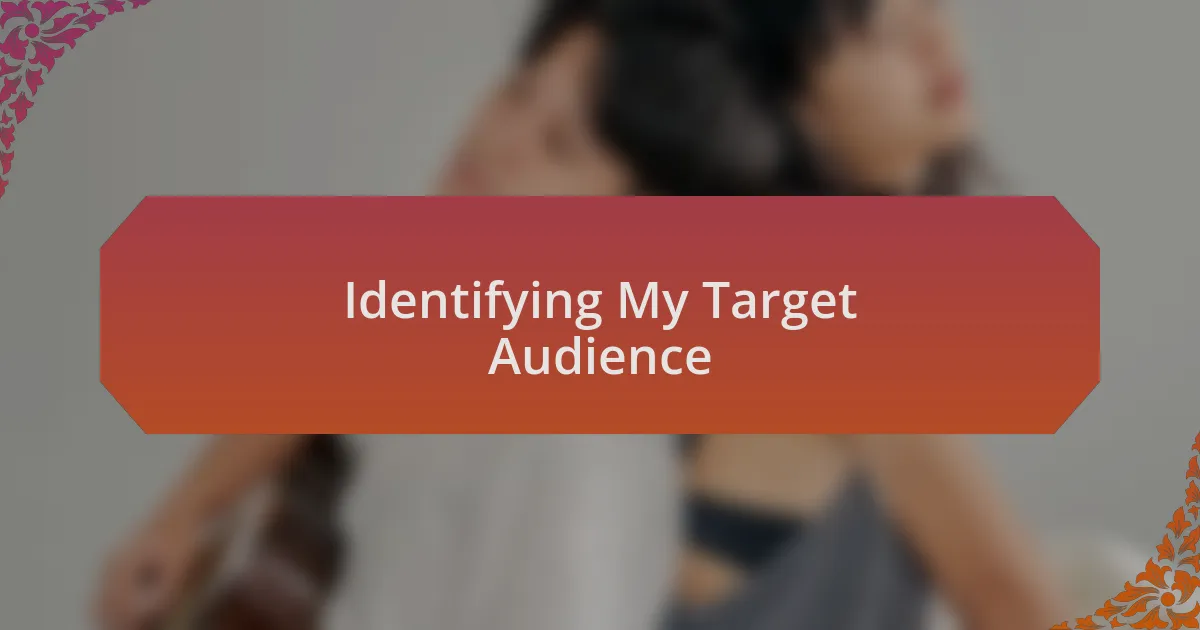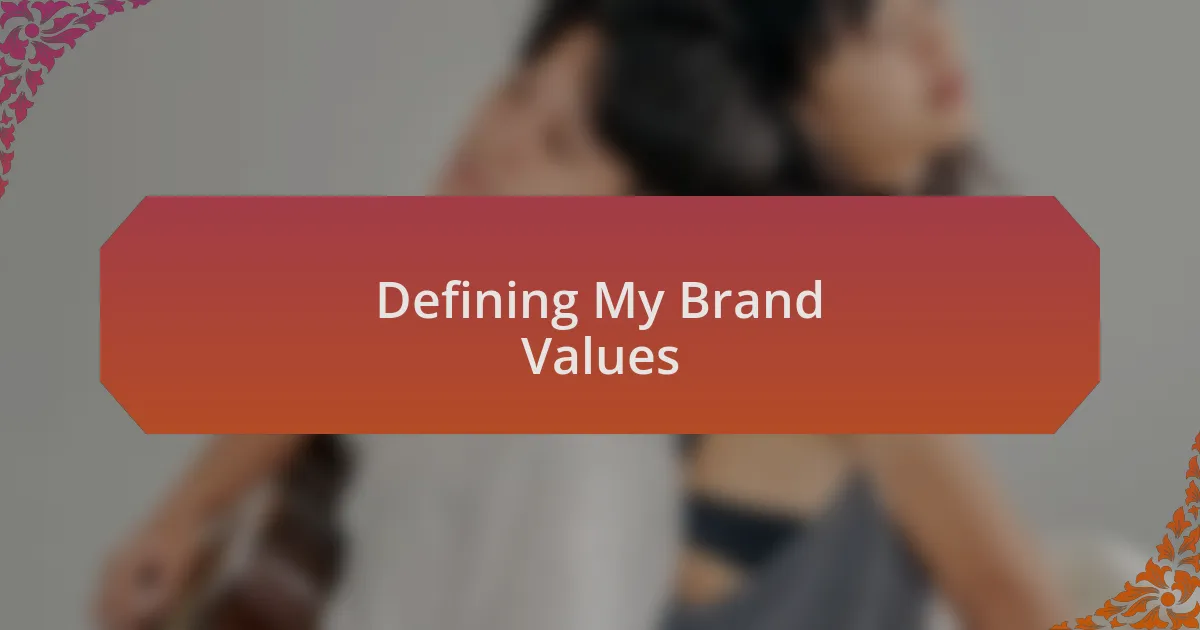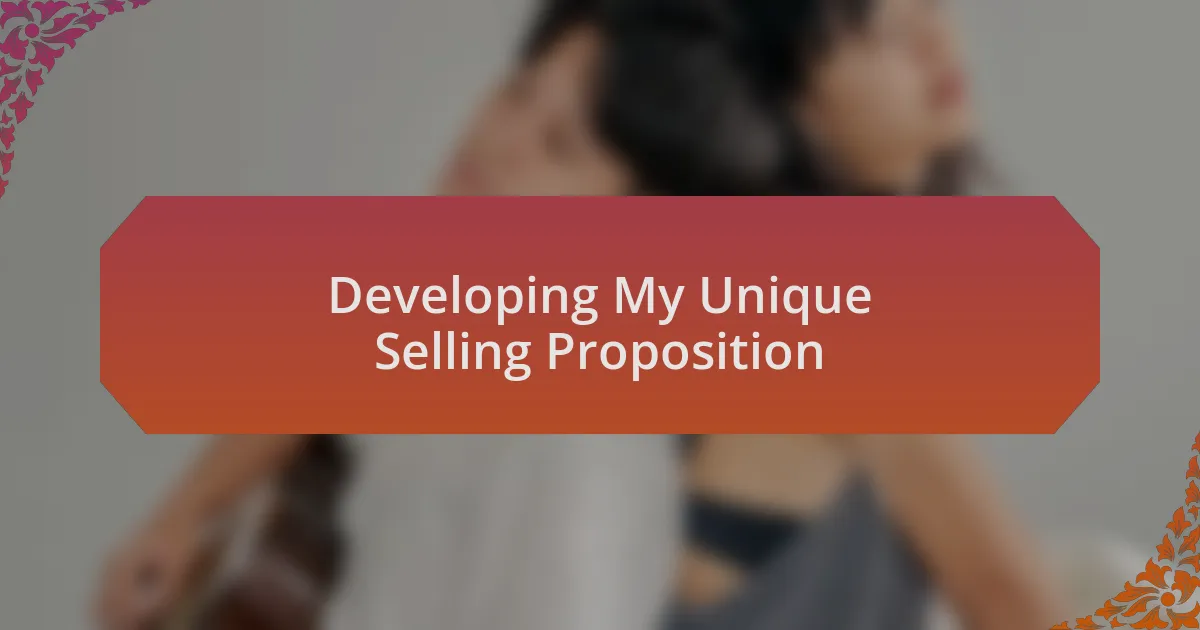Key takeaways:
- Understanding the target audience requires immersion and connection, reflecting shared values rather than just demographics.
- Authenticity, integrity, and community are foundational brand values that must align with the label’s mission and partnerships.
- Developing a unique selling proposition involves identifying niche markets and empowering undervalued artists, focusing on genuine connection.
- Active listening and fostering honest dialogue are essential for creating a supportive environment for artists.

Identifying My Target Audience
Identifying my target audience began as an exploration of the music scene itself. I vividly remember attending local gigs and feeling the pulsating energy of the crowd—was it the youthful exuberance or the seasoned fans who truly connected with the artists? This experience taught me that understanding who resonates with the music requires not just observation but immersion.
As I delved deeper, I found that my audience wasn’t just defined by age or genre preference; it was about shared values and a sense of community. One particularly memorable moment was when I hosted a small gathering with aspiring artists and fans. The conversations flowed, and I realized that my audience was hungry for authenticity and connection, something that data alone couldn’t reveal.
Reflecting on this, I often ask myself: what drives my audience to seek out new music? It’s not merely about sounding good; it’s about storytelling and emotional resonance. I discovered that tapping into their experiences and emotions allows me to understand their needs better and create a space where they feel valued and heard.

Defining My Brand Values
Defining my brand values emerged from a deep reflection on what truly matters to me and the artists I represent. I recall a defining moment when I sat down with a local artist, discussing not just their music but the purpose behind it. This conversation ignited my understanding that authenticity, integrity, and community are not just buzzwords—they are the pillars of my label’s identity.
One afternoon, while volunteering at a community music event, I felt an overwhelming sense of connection. It struck me how music has the power to unite people from diverse backgrounds. As I watched attendees share stories inspired by the performances, I realized that fostering inclusivity and support for artists is essential to my brand’s mission.
I constantly remind myself: what do I want my label to stand for? This question pushes me to stay true to my values, ensuring that every partnership and project aligns with the ethos of creativity, collaboration, and genuine expression. By embedding these values into my label’s DNA, I’m creating more than just a business; I’m nurturing a movement that resonates with artists and fans alike.

Developing My Unique Selling Proposition
To develop my unique selling proposition, I began by identifying what sets my label apart in a saturated market. I remember sitting in a café, reflecting on the countless labels I’d encountered, and I asked myself, “What can I offer that others can’t?” This led me to explore niche genres and underserved artists, fostering partnerships that celebrate diversity in sound and storytelling.
One pivotal experience was meeting an indie artist whose music challenged societal norms. I was deeply moved by their passion and resilience, which inspired me to articulate my label’s dedication to empowering voices that are often overlooked. This motivation fueled my commitment to create a platform where authenticity shines, making my unique selling proposition not just a business strategy, but a heartfelt mission.
Through this journey, I learned that developing my unique selling proposition is about more than just differentiation; it’s about connection. For me, it was crucial to foster an environment where artists feel genuinely valued. How do we cultivate that? I realized it starts with active listening and creating spaces for honest dialogue. By prioritizing these elements, I’ve laid the groundwork for a label that truly stands out, built on the real experiences and stories of the artists I serve.